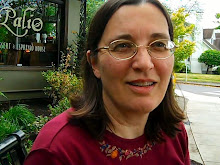Most popular Christian art in America shares the same essential assumptions as secular art, so it is largely trying to accomplish the same thing products are being created for a particular market, artists are engaging in self-expression, and art is being consumed as entertainment. . . . How many times have we heard songs in which the object of affection could just as easily be Jesus or a boyfriend?
. . . . Christian artists find their stylistic inspiration in secular art, then “change the lyrics” to fit the tastes of a Christian sub-cultural market. . . . Meanwhile, while secular art is being repainted with the face of Jesus on it for the Christian consumer, secular artists have moved on to the next big thing, leaving their Christian contemporaries to catch up in the next few years.
And then, having addressed the phenomenon, he gets to the answer for it, an answer worthy of (probably inspired by) Fr. Alexander Schmemann:
First, there ought to be no separation between the sacred and the secular. Rather, all must be made sacred. The secular should be subsumed into the sacred, baptizing it in the Name of the Father, Son and Holy Spirit, cleansing it of what is impure and vivifying it with the uncreated life of the Holy Trinity. Or to consider the issue from another angle, Mother Raphaela in her book Growing in Christ says, “Rather than thinking in terms of putting Christ into our Christmas, we may rather think in terms of putting ourselves, including our Christmas, into Christ” (p. 35).
We must make Christ our cultural atmosphere. We must make our source of inspiration not the spirit of the age but rather the Holy Spirit. We must enter into the Kingdom of Heaven, a transcendent and eternal culture which is the life of becoming “partakers of the divine nature” (II Peter 1:4). This pursuit of the sacred is a denial of the very existence of secularity, which has no real existence, being ultimately nihilistic. In previous ages, when the idea of having a non-religious society did not even occur to most people, all art was what today might be identified as “religious” but to our forefathers was simply “art.”
I've blogged Damick's thoughts on Christianity and the arts before, at Fellowship of St. Caedmon. Apparently, this essay is the introduction to an upcoming book of his titled The Transfiguration of Culture: Orthodox Christianity and the Arts. I'm looking forward to reading the rest of it.

No comments:
Post a Comment